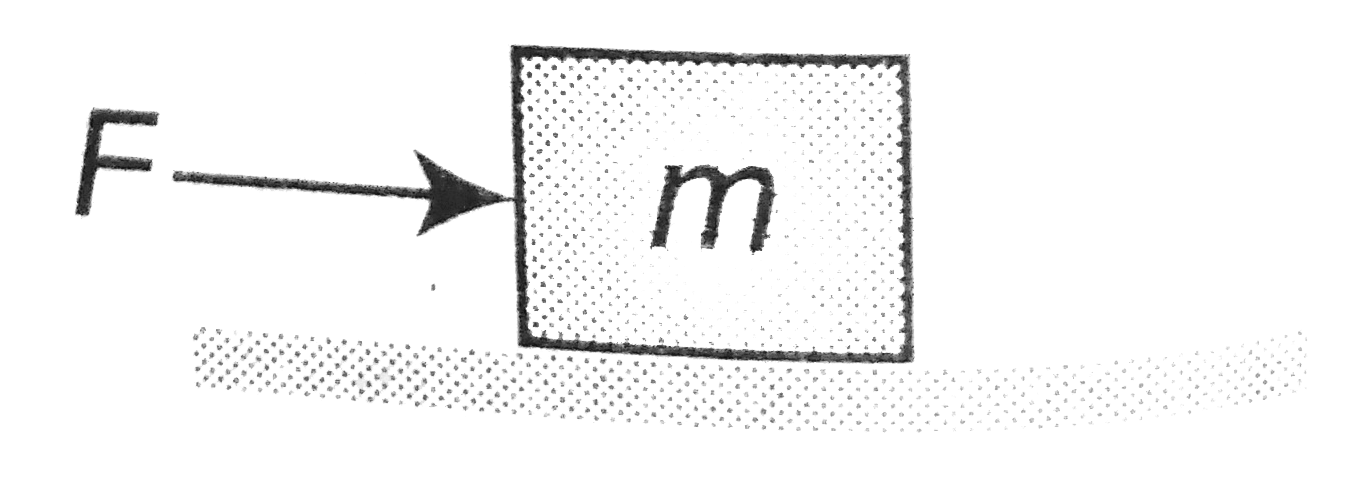A triangular block of mass M with angle 30º, 60º, 90º rests with its 30º– 90º side on a horizontal smooth fixed table. A cubical block of mass m rests on the 60º – 30º sideofthe triangular block. What horizontal acceleration a must M have relative to the stationary table so that m remains stationary with respect to the triangular block [M = 9 kg, m = 1 kg]
2.8m/s2
5.6m/s2
8.4m/s2
Zero
The correct Answer is:B
Step by step video, text & image solution for A triangular block of mass M with angle 30º, 60º, 90º rests with its 30º– 90º side on a horizontal smooth fixed table. A cubical block of mass m rests on the 60º – 30º sideofthe triangular block. What horizontal acceleration a must M have relative to the stationary table so that m remains stationary with respect to the triangular block [M = 9 kg, m = 1 kg] by Physics experts to help you in doubts & scoring excellent marks in Class 11 exams.
Updated on:21/07/2023Topper's Solved these Questions
Similar Questions
The acceleration a of trolley so that block of mass m remains stationary with respect to rough trolley as shown in the figure, is m Trolley 0 - ...
View SolutionA right-angled triangular block of mass M rests on a horizontal table . The inclination of the block is 30∘ with the table . A cubical block of mass m is placed on the incline of the block . What horizontal force must be applied on M so that m may remain stationery relative to the block ?
[Hint: Apply d' Alember's principal and consider free-body diagrams of m and the system ( m+ M).]
View Solution
Knowledge Check
A triangular block of mass M with angle 30º, 60º, 90º rests with its 30º– 90º side on a horizontal smooth fixed table. A cubical block of mass m rests on the 60º – 30º sideofthe triangular block. What horizontal acceleration a must M have relative to the stationary table so that m remains stationary with respect to the triangular block [M = 9 kg, m = 1 kg]
AgBg√2Cg√3Dg√(3)A horizontal force F acts on the block of mass m and the block remains stationary, thr value of friction force is.
 AμmgBμmg−FCFDzero
AμmgBμmg−FCFDzeroA block of mass m rests on a stationary wedge of mass M. The wedge can slide freely on a smooth horizontal surface as shown in figure. If the block starts from rest
 A(a) the position of the centre of mass of the system will changeB(b) the position of centre of mass of the system will change along the vertical but not along the horizontalC(c) the total energy of the system will remain constantD(d) All of the above
A(a) the position of the centre of mass of the system will changeB(b) the position of centre of mass of the system will change along the vertical but not along the horizontalC(c) the total energy of the system will remain constantD(d) All of the above
A block of mass m is placed at rest on a smooth wedge of mass M placed at rest on a smooth horizontal surface. As the system is released

View Solution48.A block of mass 5kg is at rest on a smooth horizontal surface Water coming out of a pipe horizontally at the rate of 2kg/sec ,hits the block with a velocity of 6m/sec.The initial acceleration of the block is
View SolutionA wooden block of mass m resting on a rough horizontal table (coefficient of friction =μ ) is pulled by a force F as shown in figure.The acceleration of the block moving horizontally is:

View SolutionTwo wooden blocks are moving on a smooth horizontal surface such that the mass m remains stationary with respect too block of mass M as shown in the figure. The magnitude of force P is:

View SolutionA block of mass m1 rests on a horizontal table. A string tied to the block is passed on a frictionless pulley fixed at the end of the table and to the other end of string is hung another block of mass m2. The acceleration of the system is
View Solution

